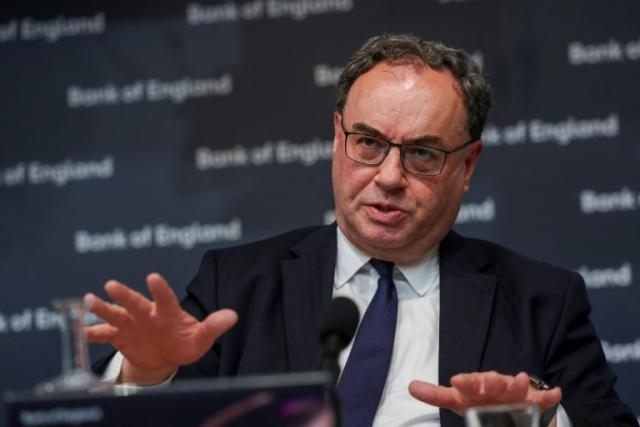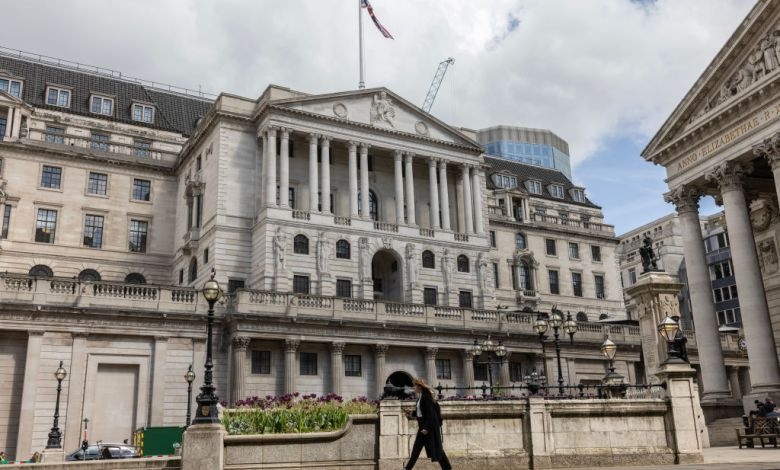In a bid to curb persistent inflation, the Bank of England has once again raised interest rates by 0.25%. This latest move, the 12th in a row, brings the primary lending rate for commercial banks in the UK to 4.5%, the highest since October 2008. This decision mirrors those of the US Federal Reserve and the European Central Bank, both of which also implemented a 0.25% rate hike last week.
During a media briefing, the Bank of England’s Governor, Andrew Bailey, reaffirmed the bank’s dedication to reducing inflation to its 2% target and sustaining it there. In his words, “A robust economy is built on the foundation of low and steady inflation.”
Despite the ongoing economic strains, the central bank anticipates the UK economy will steer clear of recession, with projected growth rates of 0.25% this year and 0.75% in 2024. These projections present a more optimistic view than the bank’s February estimates, which had predicted economic shrinkage of 0.5% and 0.25% for the two years, respectively.
Bailey attributed the updated, brighter forecast to significant reductions in global natural gas prices and the UK economy’s surprising resilience, including robust employment figures. However, he was quick to add that, while better than previously expected, the growth forecast was still relatively subdued.
Despite inflation currently sitting above 10%, the Bank of England anticipates a steep drop in the coming months, largely due to declining energy prices. However, Bailey warned that the forecast for prices was still heavily inclined towards the risk of higher inflation. The bank will keep a close eye on indicators like the tightness of the job market, trends in wage growth, and inflation in services prices to evaluate the endurance of inflationary pressures. If evidence of these pressures becomes more persistent, Bailey noted, additional tightening of monetary policy would be necessary.

The Bank of England, as the first major central bank to raise interest rates post-pandemic in December 2021, has seen inflation persistently high in the United Kingdom due to surging food and energy prices, coupled with low unemployment and labor shortages, which have driven up wages.
Recent data revealed a slight decline in the annual rate of inflation to 10.1% in March, from 10.4% in February. Despite this modest dip, the rate remains significantly higher than in the United States and Europe.
Food prices experienced a substantial year-on-year increase of 19.2%, the largest surge in over 45 years, with bread and cereal costs reaching record highs. The Bank of England anticipates a moderation in food prices in the coming months, albeit at a slower pace than previously predicted.
Simultaneously, rising wages have contributed to the inflation problem. According to the Office for National Statistics (ONS), regular pay growth, excluding bonuses, grew by 6.6% year-on-year in the three months leading up to February 2023. Although this figure also surpasses that of the United States and Europe, wage increases have not kept pace with soaring prices.
The Bank of England faces the challenge of managing a struggling economy, as interest rate hikes typically dampen economic growth by increasing the cost of loans and mortgages, thus curbing spending by businesses and consumers.
The International Monetary Fund’s latest forecasts predict a 0.3% shrinkage in UK gross domestic product this year, making it the worst-performing major developed economy. This highlights the delicate balancing act the Bank of England must navigate: curbing inflation without stifling economic growth.
The central bank’s aggressive series of rate hikes underscores its determination to address inflation, which has eroded consumers’ purchasing power and posed a threat to the post-pandemic economic recovery. However, these rate hikes also carry the risk of dampening consumer spending and business investment, which are key drivers of economic growth, by making borrowing more expensive. The Bank of England must carefully navigate this double-edged sword, ensuring that inflation is kept in check while avoiding stifling the very growth needed for a full recovery from the pandemic’s impact.
The Bank of England’s revised forecast, reflecting falling energy prices and a resilient labor market, may be met with cautious optimism in the UK. It suggests that the economy possesses greater strength than previously believed. Yet, the persistently high inflation rate and projected contraction in GDP indicate that significant challenges remain.
Governor Bailey’s comments indicate the bank’s preparedness to continue tightening monetary policy if inflation proves more stubborn than anticipated. This potential for further rate hikes, coupled with the bank’s acknowledgment of skewed inflation risks, signals that the battle against inflation is far from over.
As the UK grapples with these challenges, the decisions made by the Bank of England in the coming months will play a crucial role in shaping the country’s economic trajectory in the post-pandemic world. Balancing the need to address inflation with supporting economic growth requires a delicate and strategic approach, one that will define the path to a stable and prosperous future for the United Kingdom.
©world-news.biz
